The latest developments of nuclear theory related to the $r$-process

LA-UR-22-XXXXX
Matthew Mumpower
INT $r$-process / EOS Workshop
Wednesday May 25$^{th}$ 2022

FIRE Collaboration
Fission In R-process Elements
To understand the formation of the elements
Requires deep knowledge of a range of fields, including:
The theoretical modeling of astrophysical environments
Multi-messenger observations (gravitational waves, EM waves, etc.)
Nuclear theory predictions for exotic nuclei
Precision experiments to constrain nuclear theory
Data and observations are limited
We must be clever when deciphering what is going on with nucleosynthesis...
What is the $r$-process?

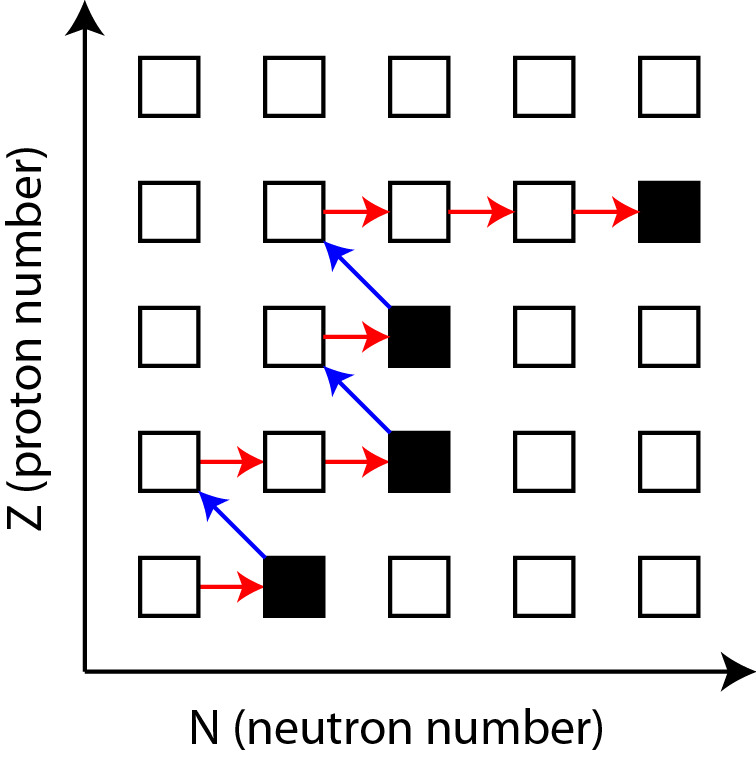
Rapid neutron capture that occurs in astrophysical environments allowing for the production of heavy elements
Neutron captures are initially much faster than $\beta$-decays
Relative slowdown in the nuclear flow (right) produces peak structures in the observed abundances (left)
Astrophysical environment must produce a lot of free neutrons in order for this process to proceed
Where can the $r$-process occur?
One possibility is in (rare?) supernovae
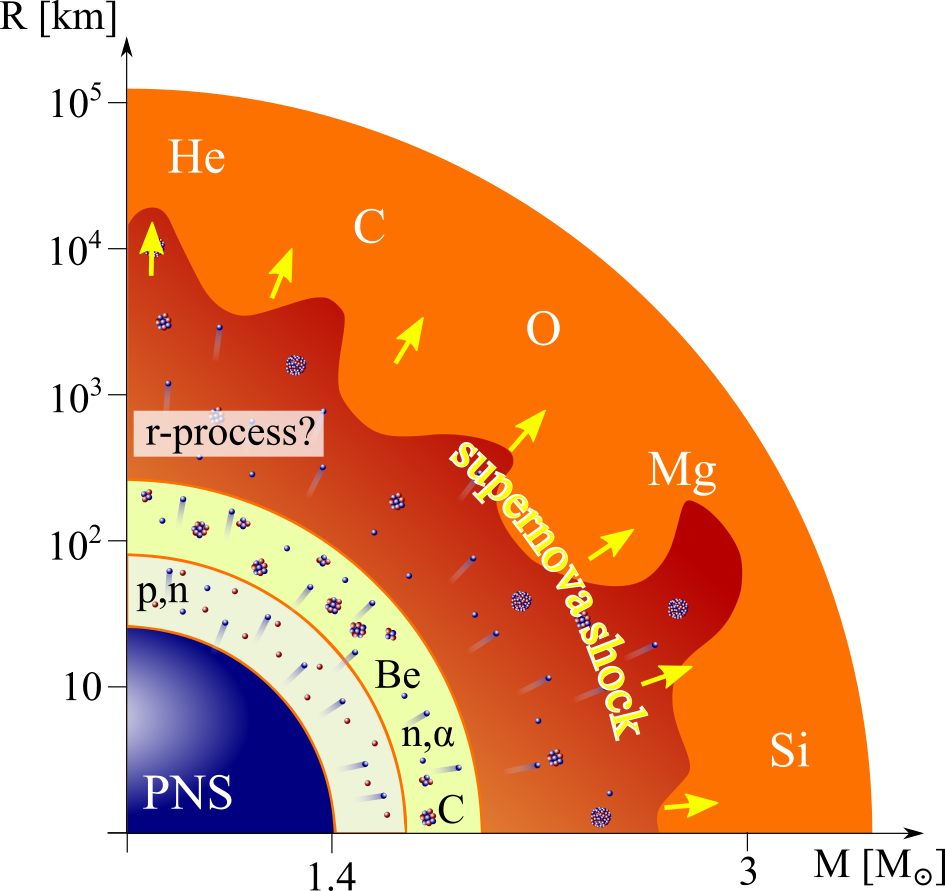
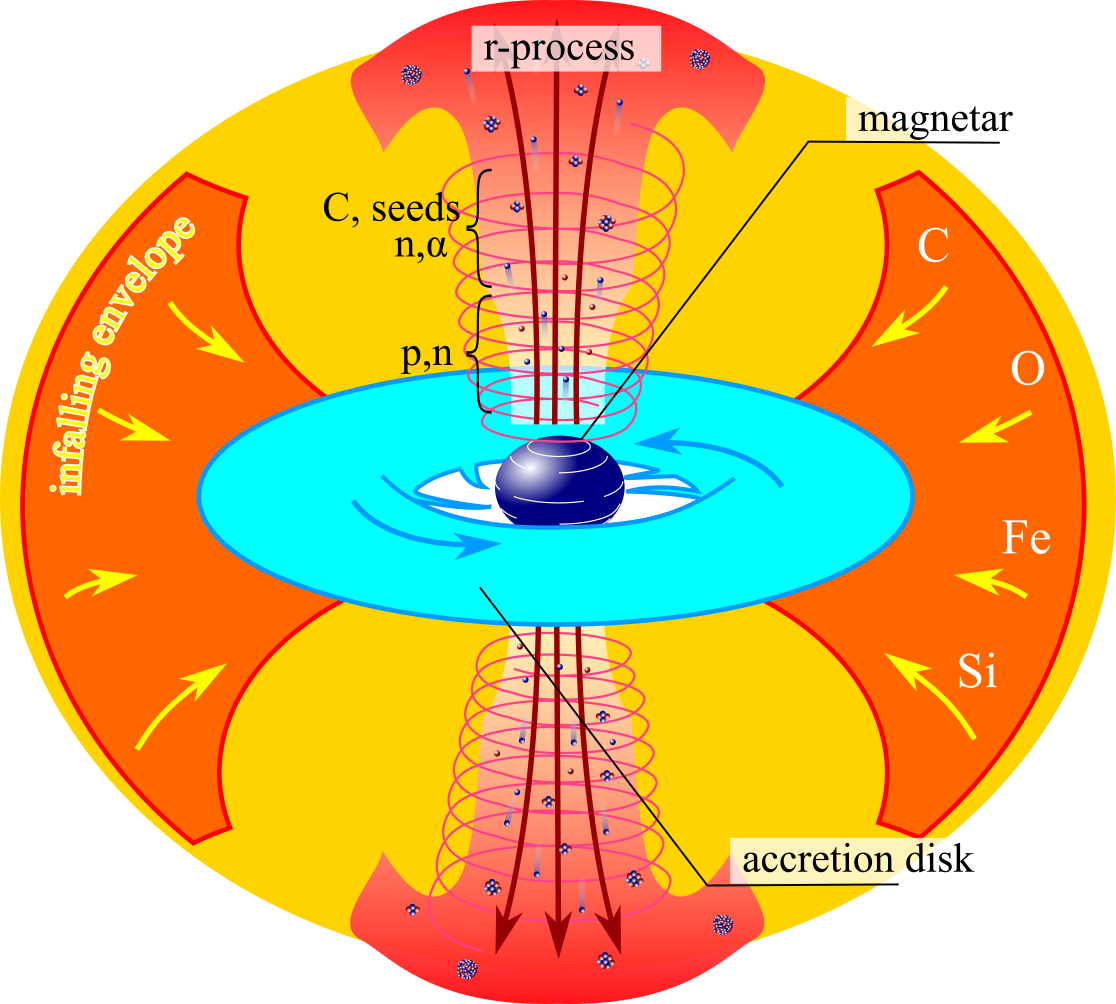
For standard supernovae (left) neutrino physics still needs to be well understood
Jets in magnetorotational driven supernovae may also provide the necessary conditions
Another option is the disk winds of collapsars - black hole forms after core collapse of a rapidly rotating star
Where can the $r$-process occur?
Another possibility is in compact object mergers
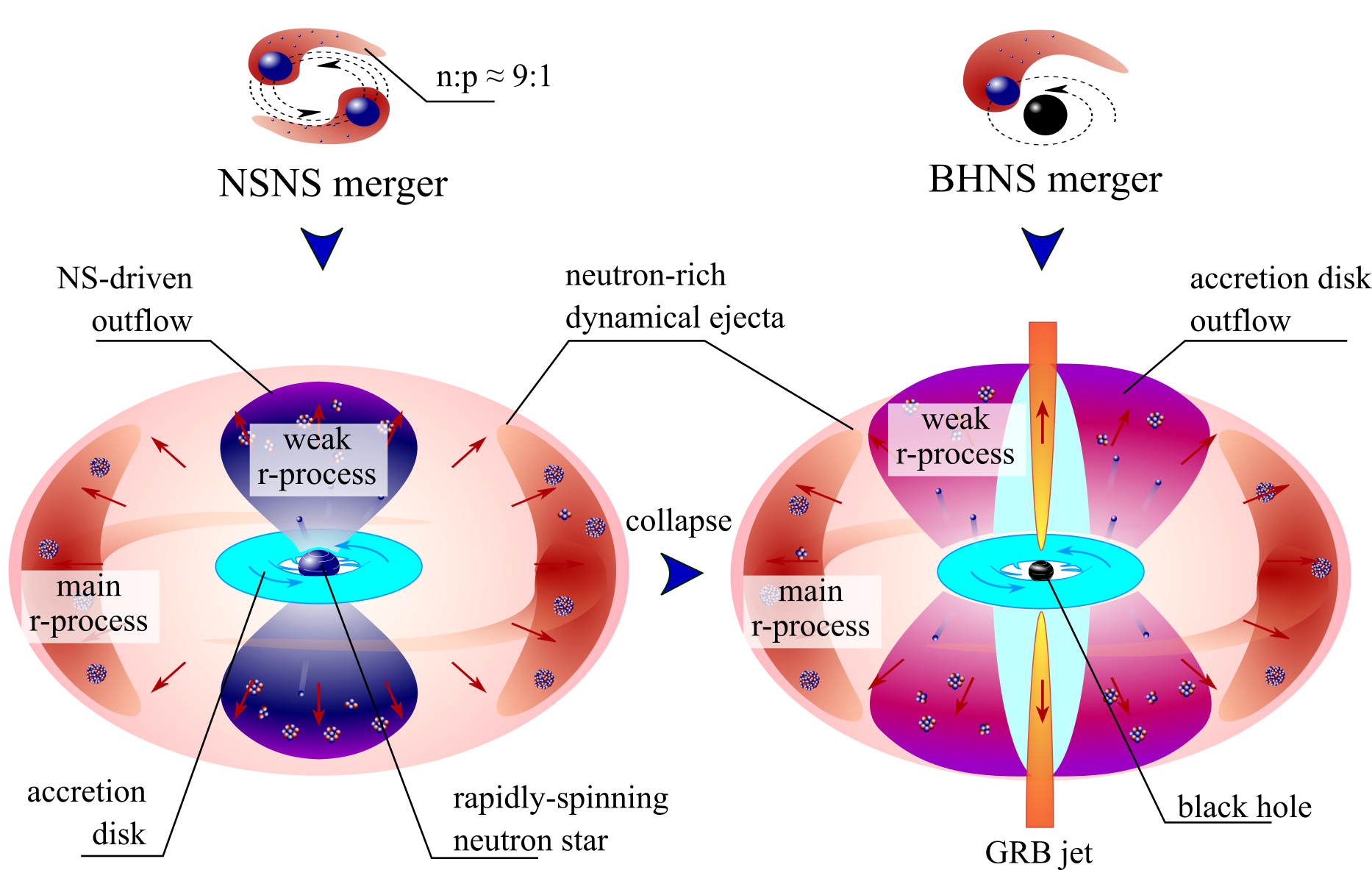
A binary merger of neutron stars is an exciting possibility (some indirect evidence exists)
Another option is in the disk of a black hole neutron star binary
When we model nucleosynthesis
We want to describe the abundances observed in nature

But there is uncertainty in:
The astrophysical conditions (large variations in current simulations)
The nuclear physics inputs (1000's of unknown species / properties)
An example: kilonova impacted by nuclear uncertainties

Lanthanide / actinide production can vary drastically using different nuclear models
This in turn impacts heating, thermalization and light curves even for fixed ejected mass & velocity
Inputs from nuclear physics
1st order: masses, $\beta$-decay rates, reaction rates & branching ratios
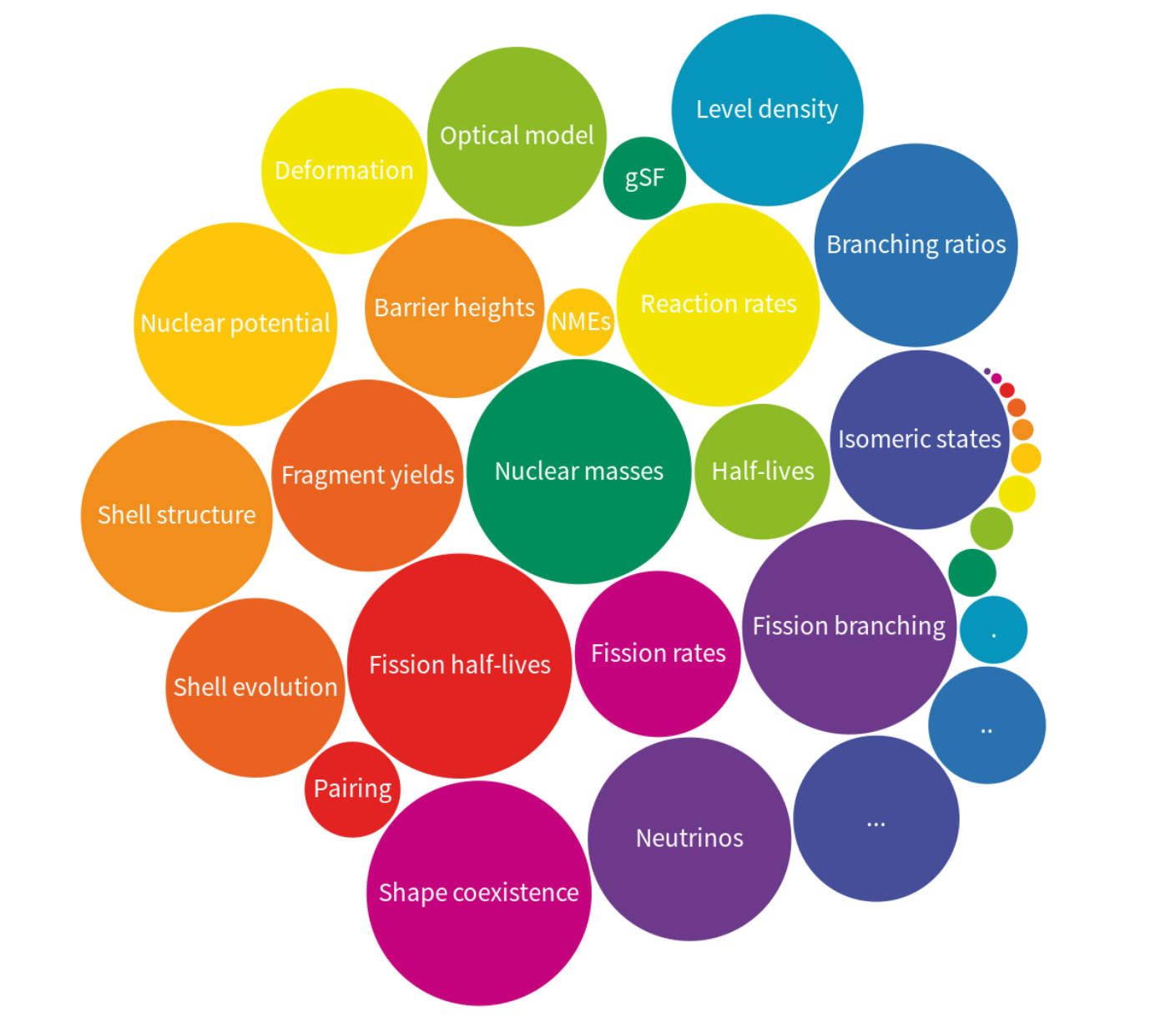
Nuclear fission in a nutshell

The fission process:
A heavy nucleus splits into lighter fragments
Subsequent particle emission and decays then occur
Many events gives rise to fission yield
Nuclear fission for the $r$-process

Influence on the $r$-process:
Fission rates and branching determine re-cycling (robustness)
Fragment yields place material at lower mass number; barriers determine hot spots
Large Q-value ⇒ impacts thermalization and therefore possibly observations
Responsible for what is left in the heavy mass region when nucleosynthesis is complete ⇒ "smoking gun"
Fission Barriers
Fission Barrier Heights (FRLDM)
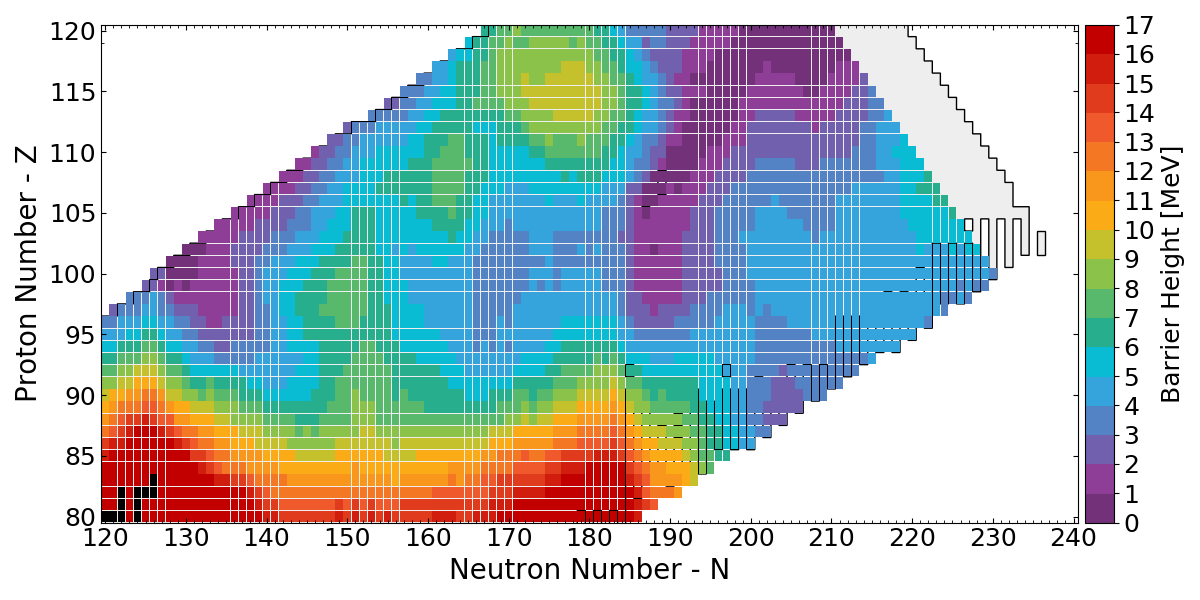
(Maximum) FRLDM Barrier heights
Low barrier ↦ fission ⇑
$r$-process hot spots follow low barriers
Fission Barrier Heights (HFB-14)
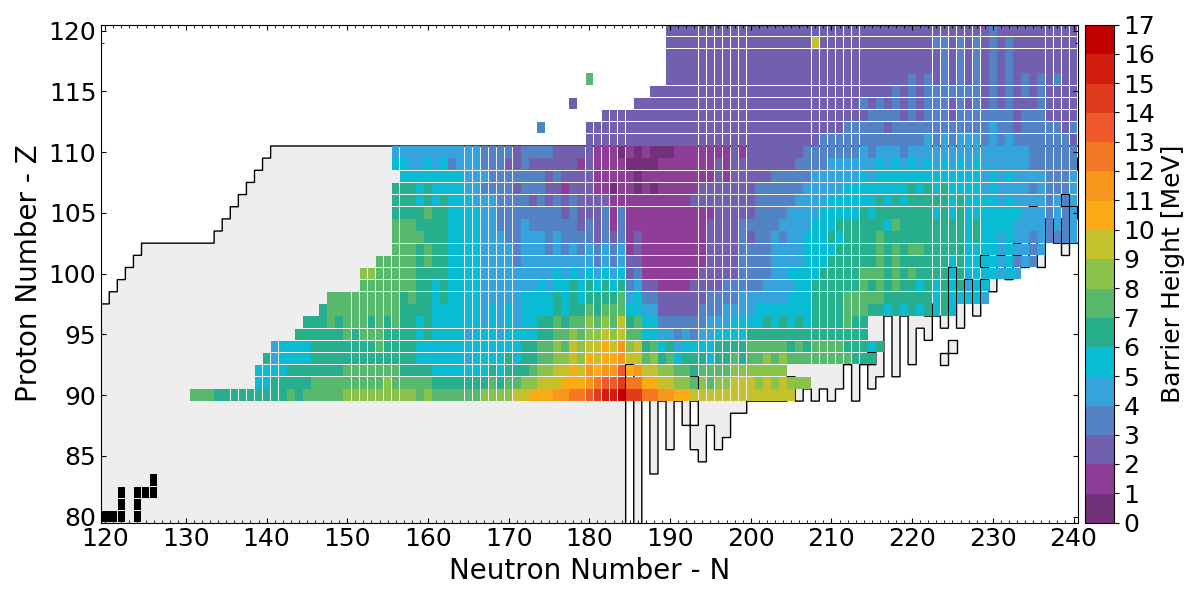
(Maximum) HFB-14 Barrier heights
Low barrier ↦ fission ⇑
Used in (n,f) and $\beta$df, spontaneous fission calculations
Fission hot spots

We've taken a look at the region where fission seems to occur the most
With variations in both astrophysical conditions and nuclear models
Nuclei which influence the final abundances are colored for (n,f) and ($\beta$,f)
fission yields
A simple picture of fission

Follow progression of the nucleus from compact to highly elongated shapes
Finite-Range Liquid-Drop Model
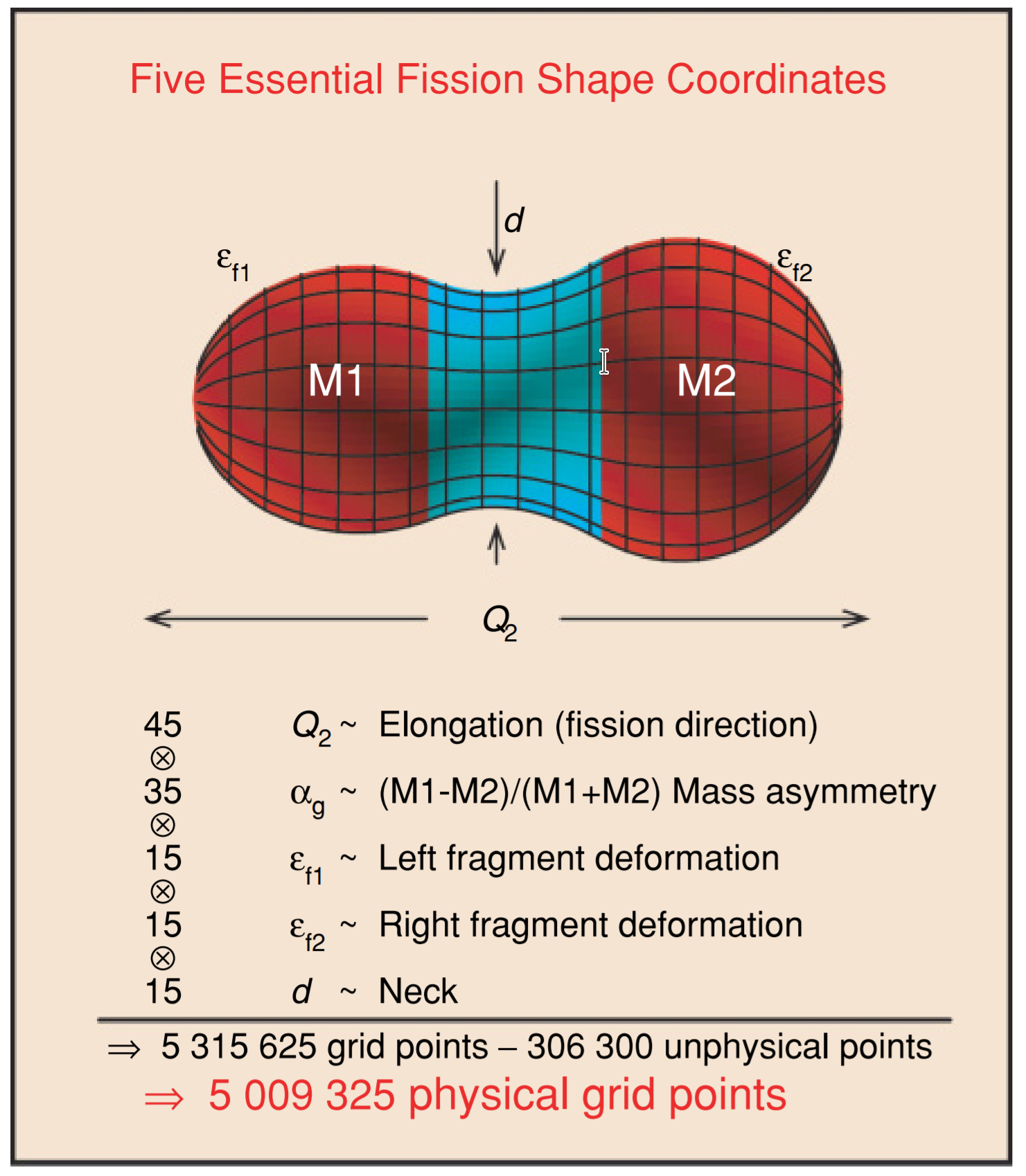
Many possible shape degrees of freedom - but we have to isolate the most important
How do we calculate fragment yields with this model?
Change in nuclear shape acts as a driving force for bulk rearrangement of material
This results in a collective kinetic energy
The macroscopic shape degrees of freedom couple to individual nucleonic motion
Resulting in an evolution that is both damped and diffuse
This can be approximated as Brownian shape motion
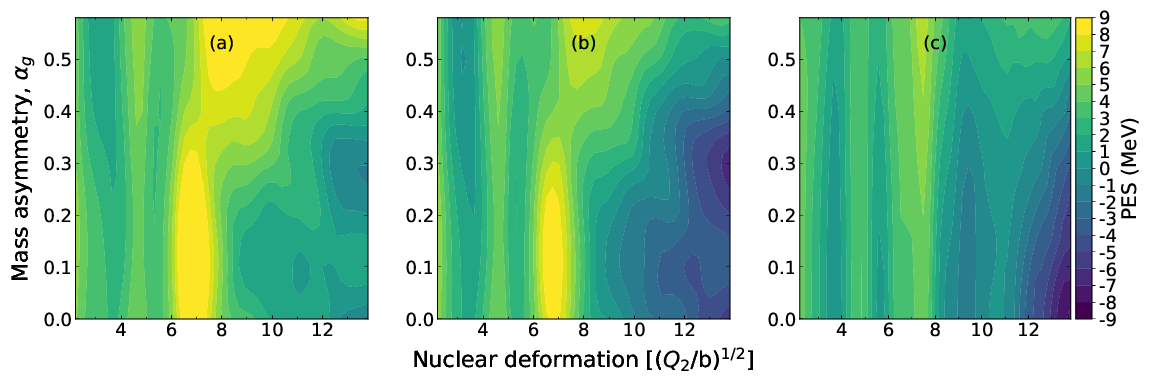
Fission evolution
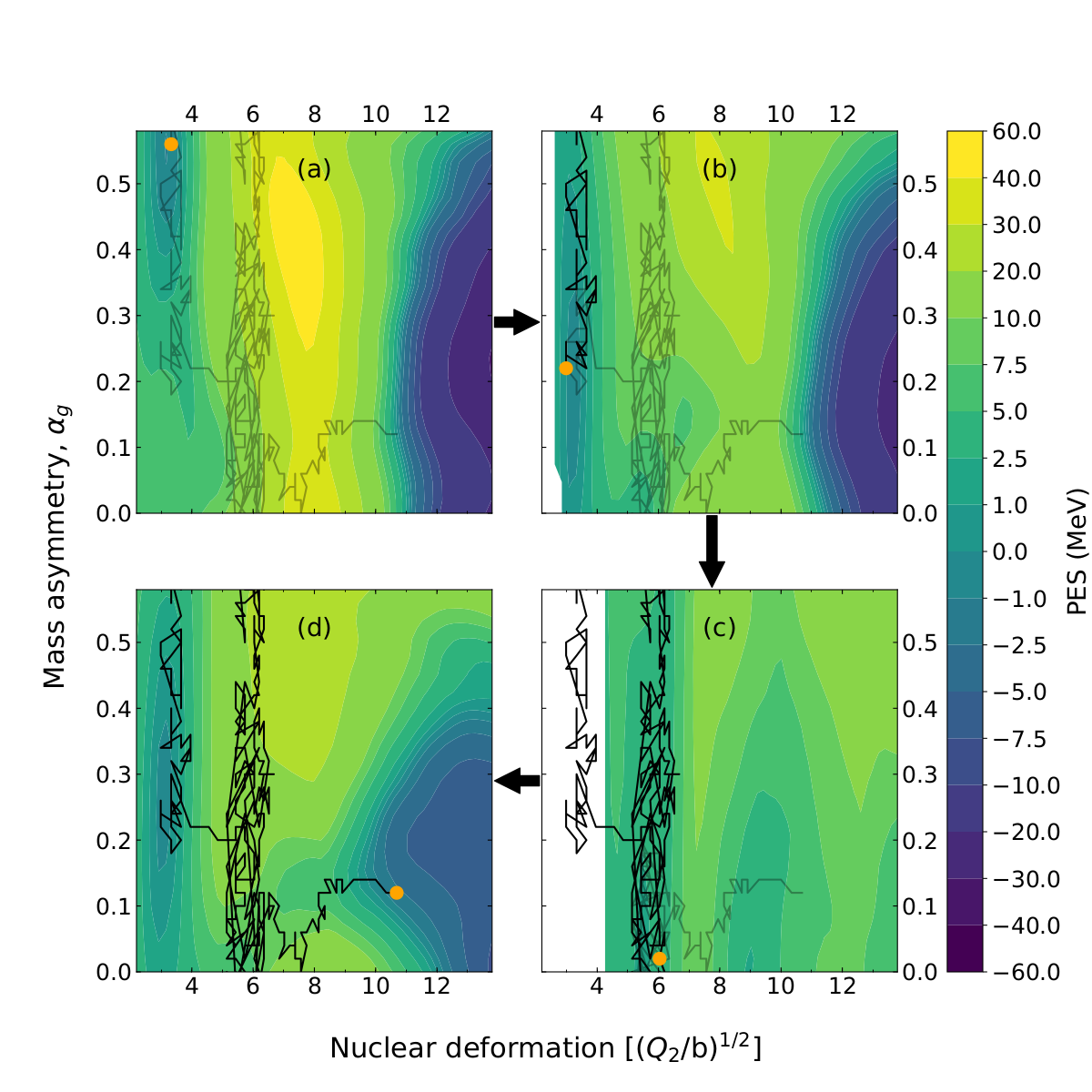
Amounts to random walk across potential energy surface
236-U Y(Z,A) yield
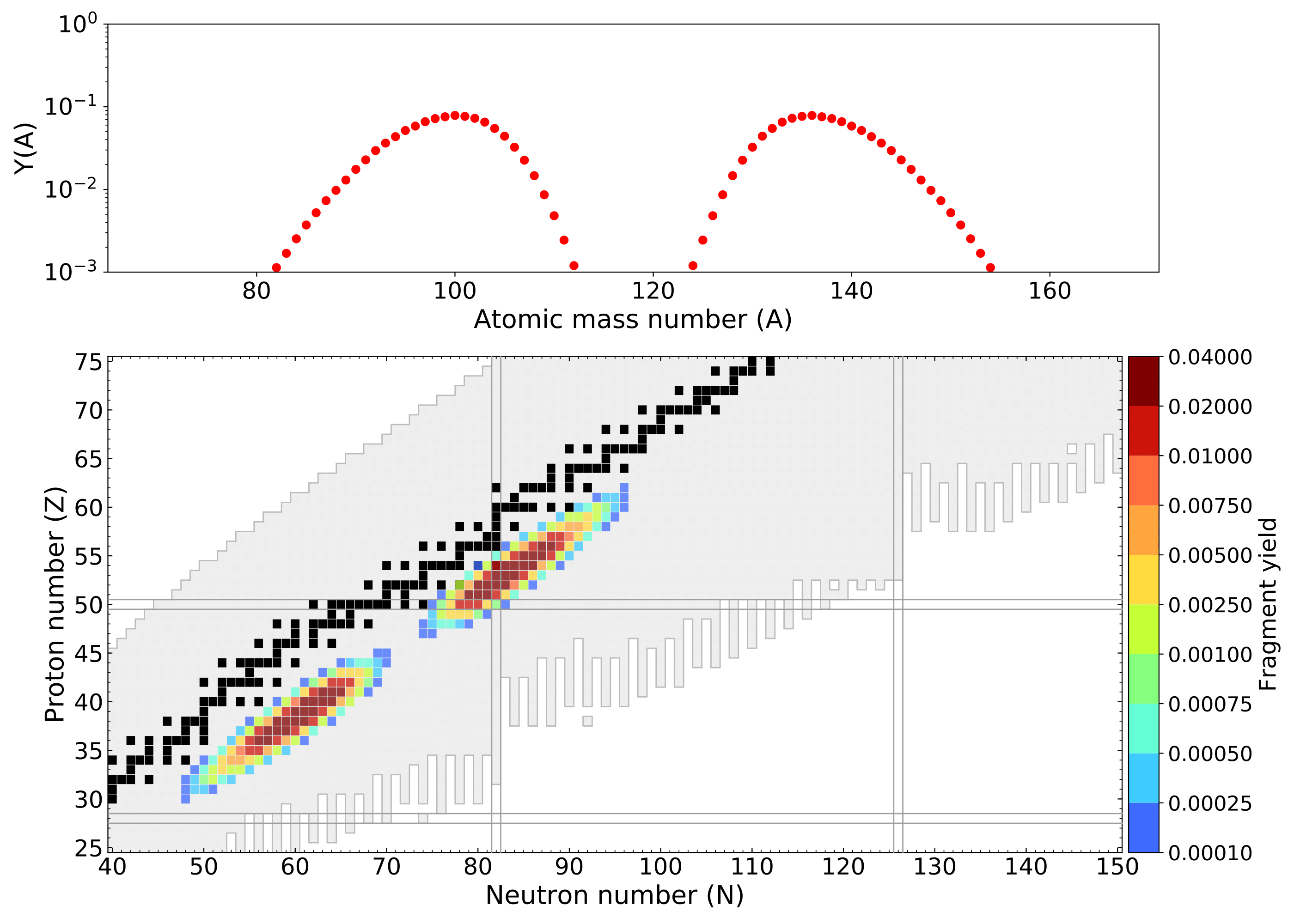
250-U Y(Z,A) yield
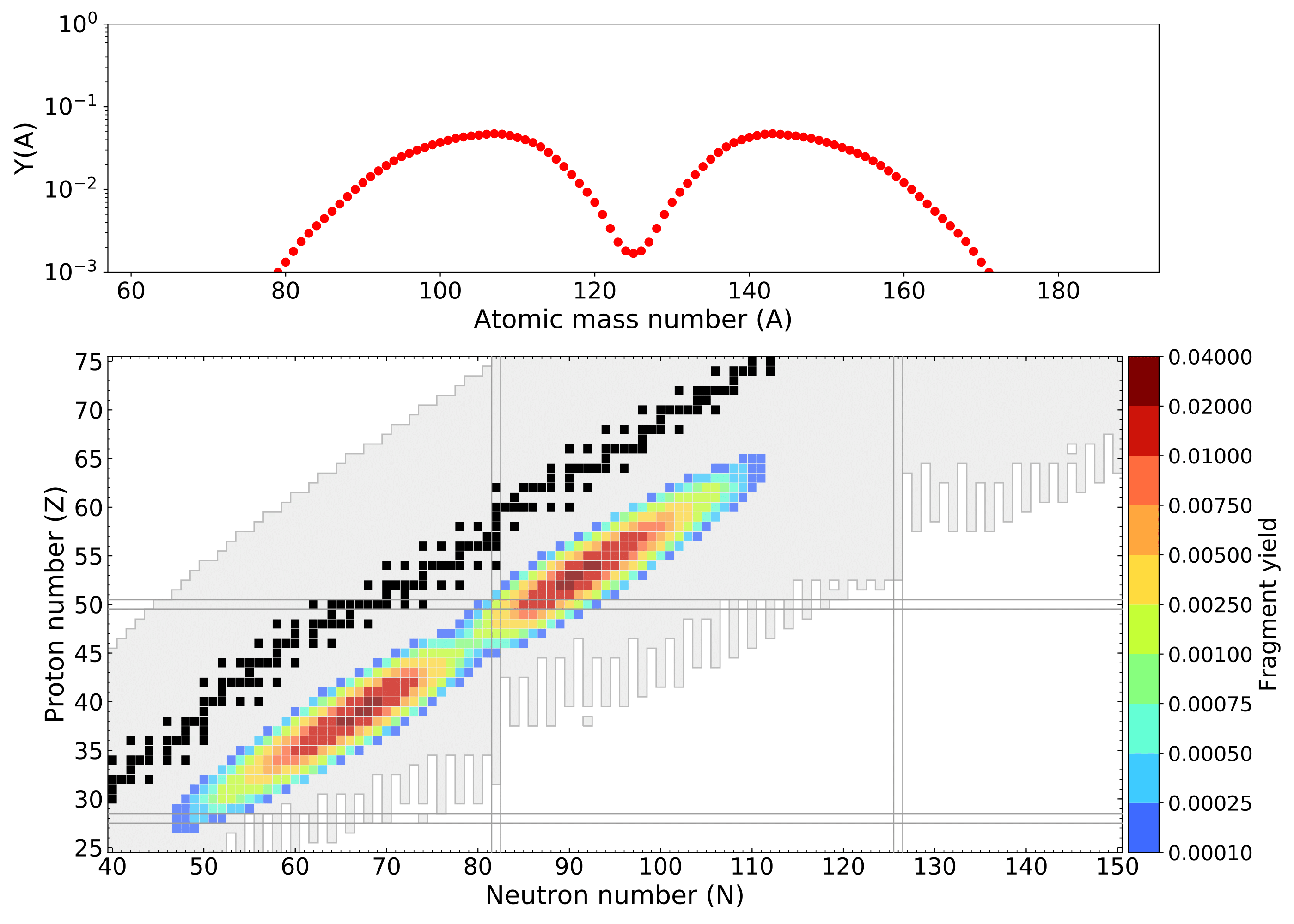
260-U Y(Z,A) yield

270-U Y(Z,A) yield
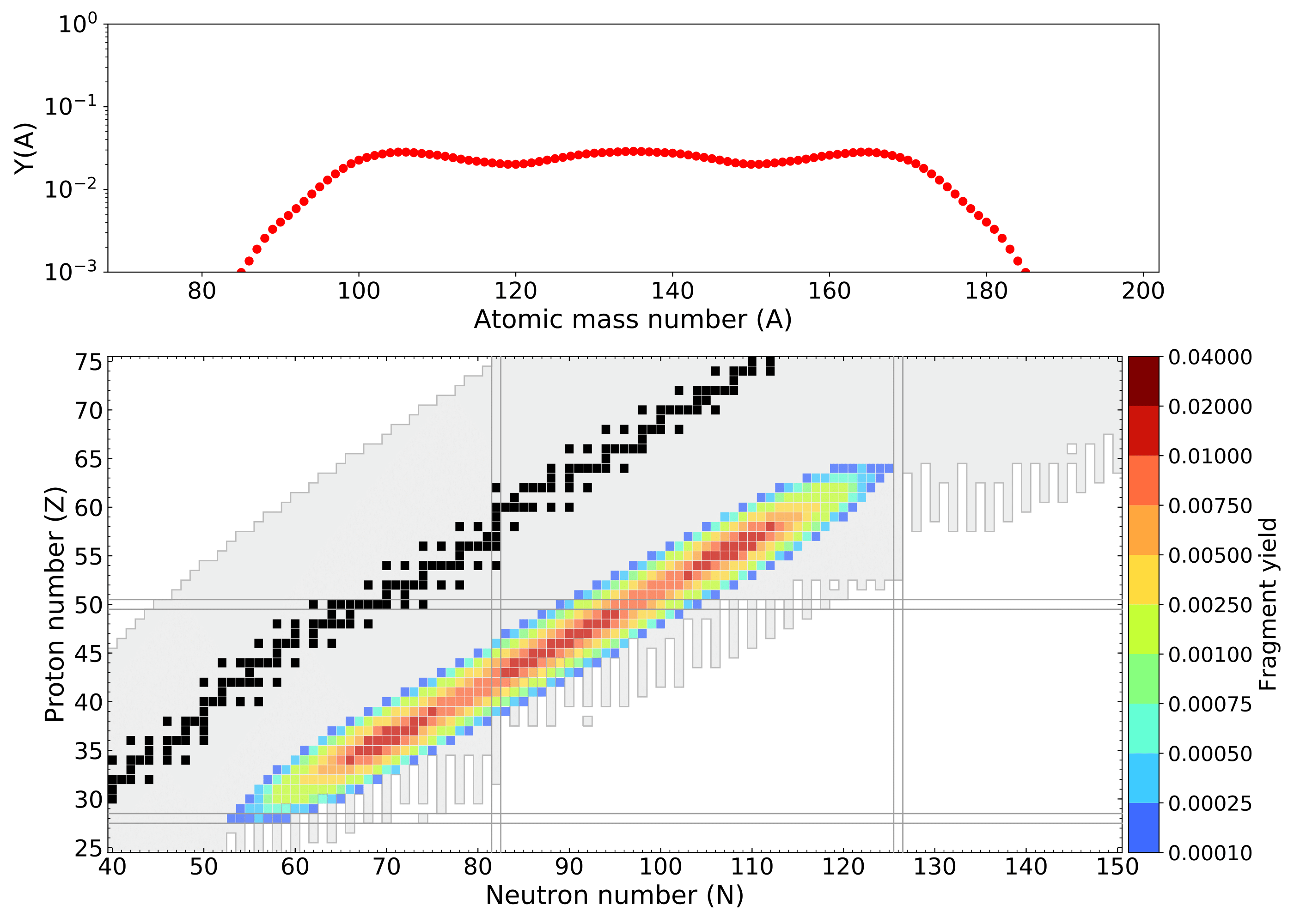
Number of Peaks
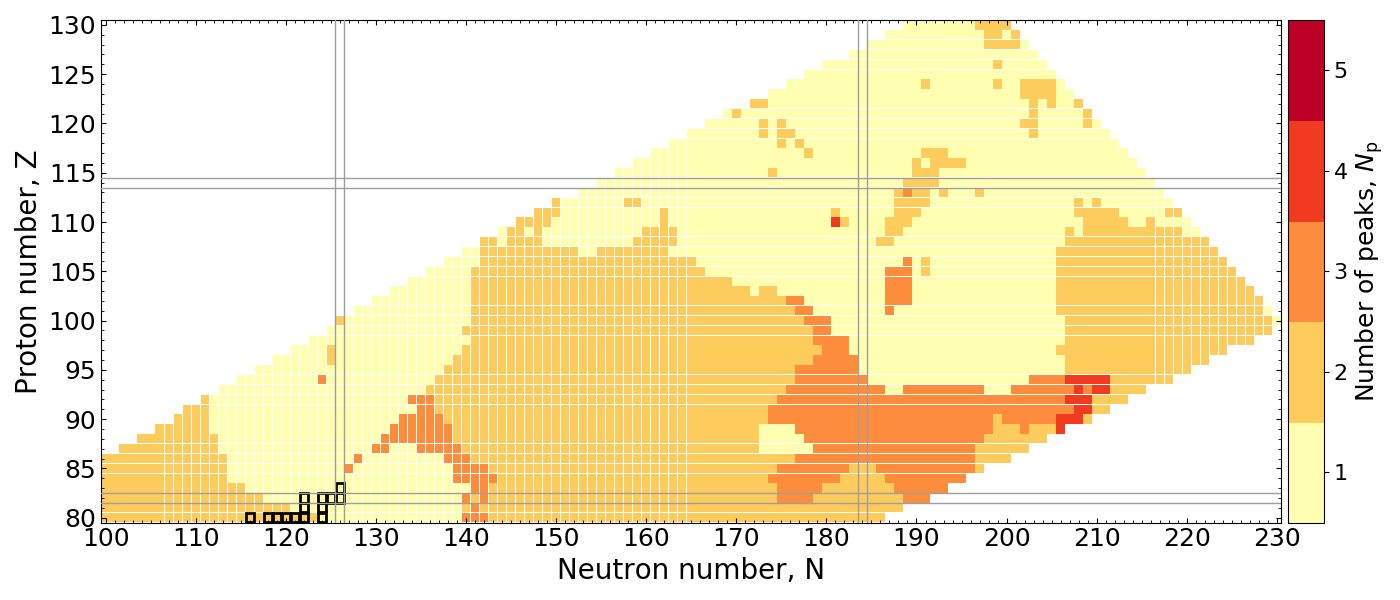
Count the number of peaks in the mass yield, $Y(A)$, distribution
Rather smooth variation in number of peaks across chart of nuclides.
$r$-process region: 2 or 3 peaks are the norm given our prediction of fission hot spots
Measure of Asymmetry

Measure the distance in $A$ between the maxima of $Y(A)$ and $Y(A_{\rm f}/2)$
Abrupt changes can be seen when the maxima shift from symmetric to asymmetric
Symmetric followed by asymmetric distributions can be expected in $r$-process simulations
Extent of Y(A) Distribution
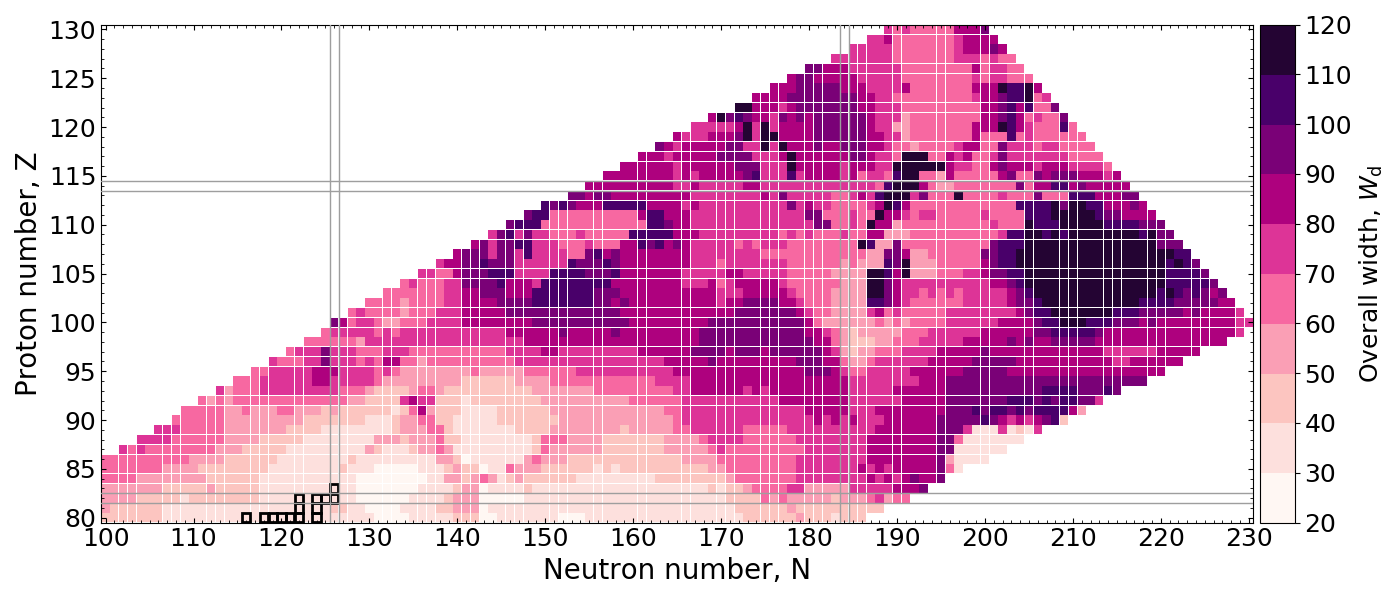
Measure the spread of the daughter products in $A$
Strong dependence can be seen with the fission system
Wiggles in the yield (number of peaks or asymmetry) don't matter if the distribution is wide!
Peak Location (A)
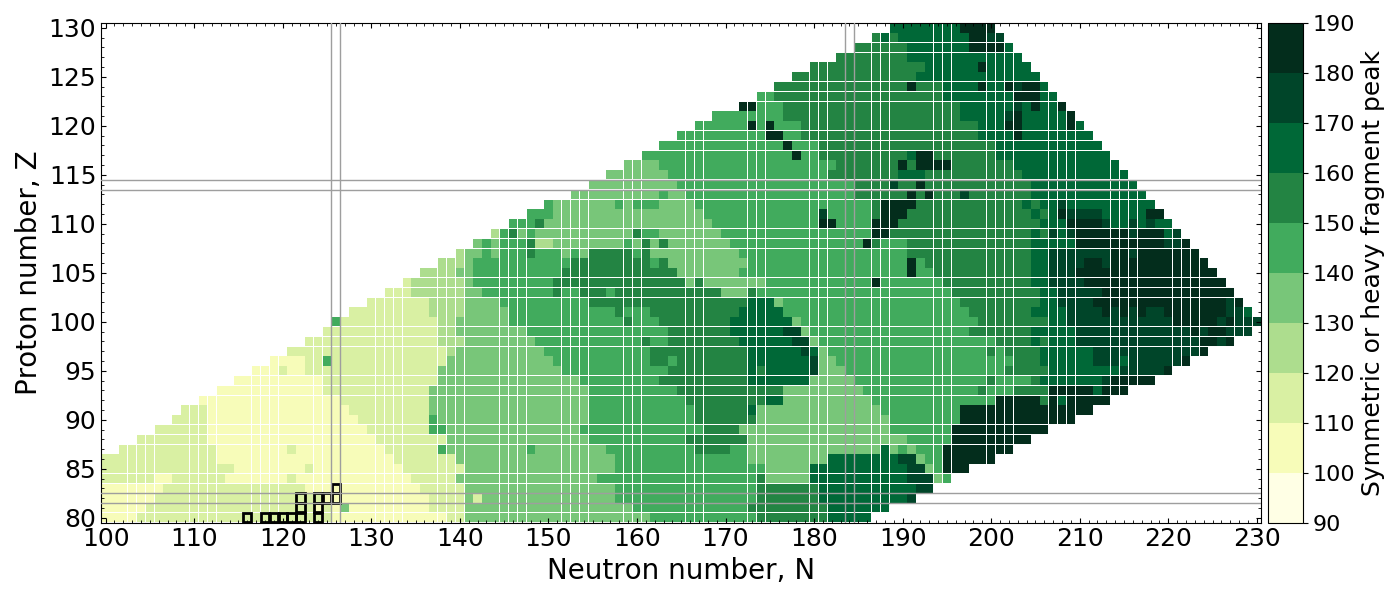
Measure the placement of material of the highest peak in $A$
Notice the transition between 3 and 2 peaks plays an important role
$r$-process conditions from astro. simulations suggest population of $A\sim150$ to ligher nuclei
Impact on the abundances
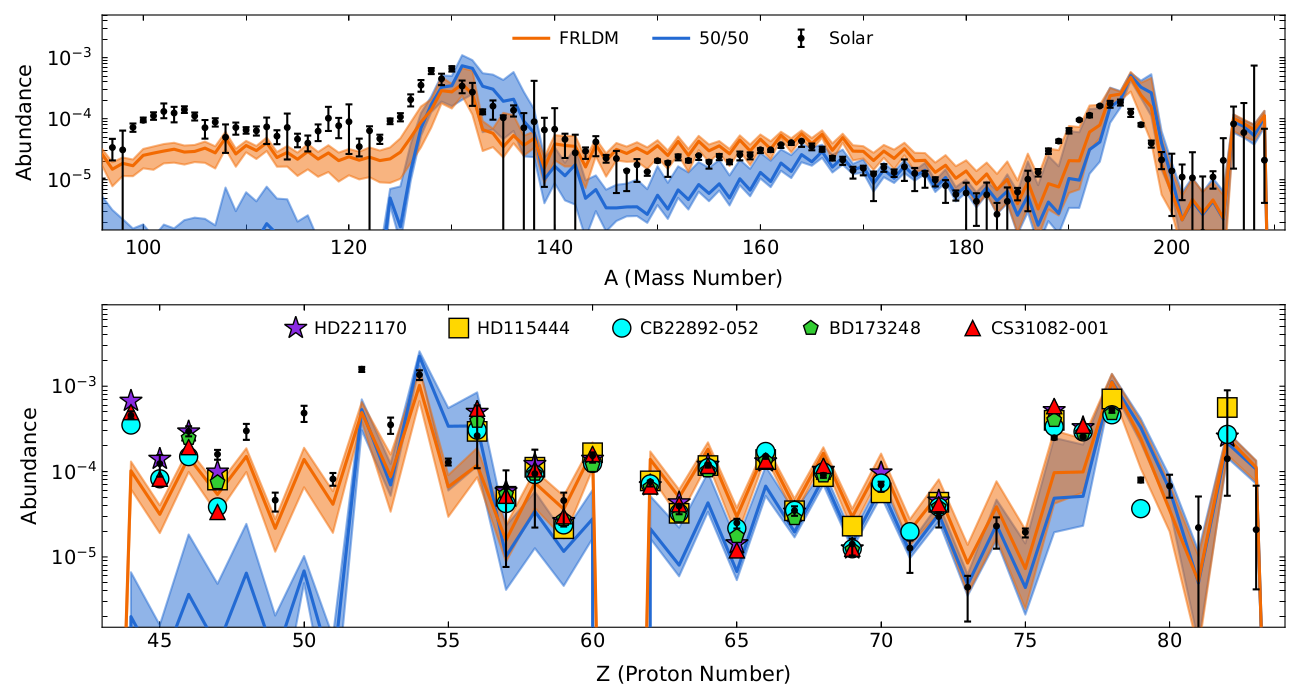
Abundance output using commonly used 50/50 split and new FRLDM model predictions
Co-production of light nuclei from $Z\sim 45$ to the actinides (dynamical merger ejecta only!)
Universality may extend further down to lighter nuclei than commonly accepted in the literature
Yields are also important for prompt $\gamma$ spectrum
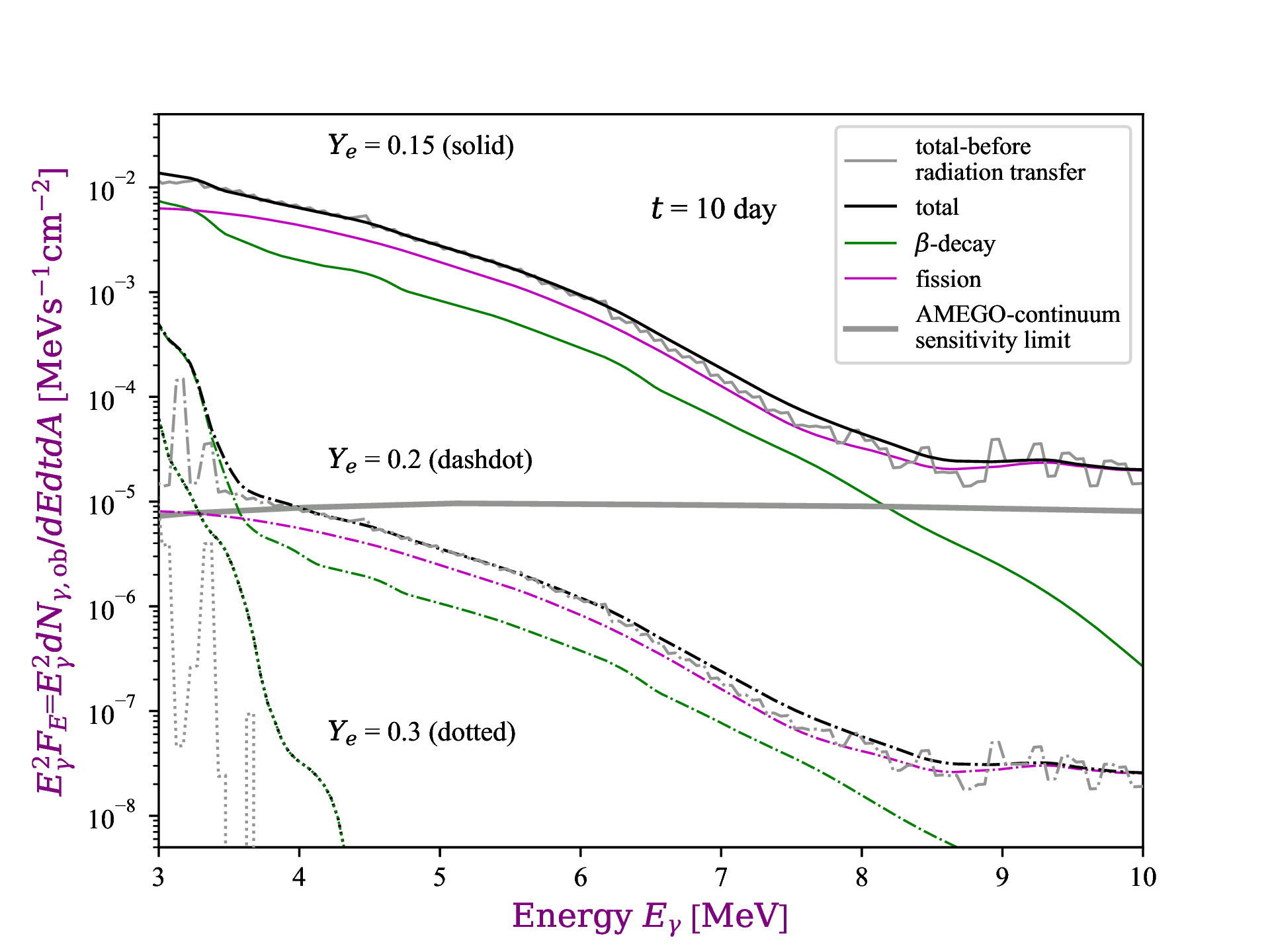

$\gamma$ spectrum calculated with GEF code for neutron star merger event located at 10 kpc
Observable high energy $\gamma$'s come 100% from fission (left)
Whether or not this component of the spectrum exists depends on composition (right)
What is left after fission?
Long-lived actinides
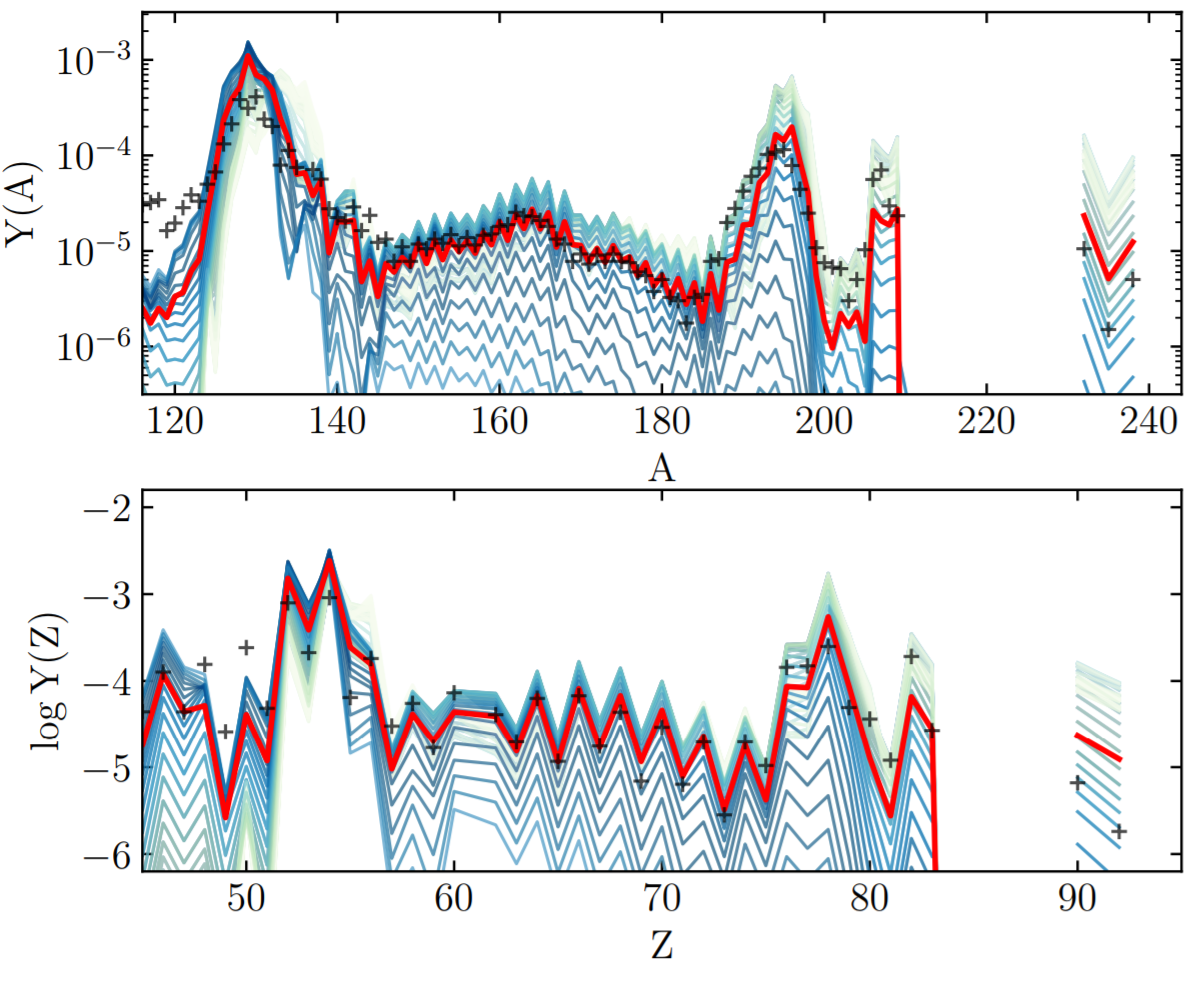
In some simulations actinides seem to be overproduced versus lanthanides (actinide boost)
A sufficient amount of dilution with ligher $r$-process material is required to match the solar isotopic residuals
∴ Fission theory has implications far beyond nucleosynthetic outcomes; e.g. for galactic chemical evolution, etc.
One example: $^{254}$Cf(Z=98)

Is there any possible precursor to show that actinide nucleosynthesis has occurred in an event?... Maybe!
The spontaneous fission of $^{254}$Cf can be a primary contributor to nuclear heating at late-time epochs
The $T_{1/2}\sim 60$ days; found from nuclear weapons testing
Vassh et al. J. Phys. G (2019)
Production of $^{254}$Cf(Z=98)
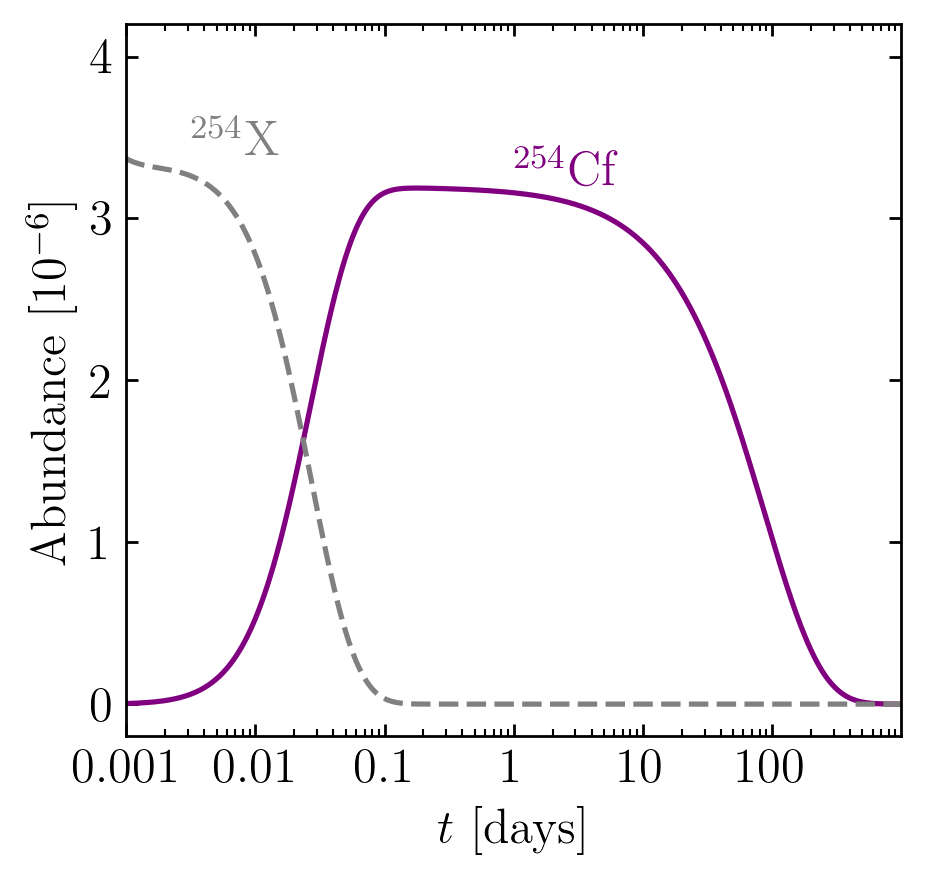

Primary feeder seems to be from $\beta$-decay
Production of this nucleus been explored over a range of nuclear models; some high - some low
Remains to be seen if we can disentangle from other late-time heating sources (e.g. puslar or accreetion fallback)
Observational Impact of Californium
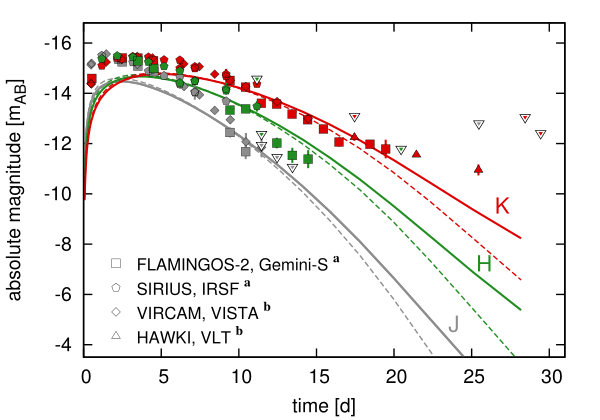

Both near- and middle- IR are impacted by the presence of $^{254}$Cf
Late-time epoch brightness can be used as a proxy for actinide nucleosynthesis
Future JWST will be detectable out to 250 days with the presence of $^{254}$Cf
This also has implications for merger morphology...
Special thanks to
My collaborators
A. Aprahamian, J. Barnes, J. Clark, B. Côté, J. Dolance, W. Even, C. Fontes, C. Fryer, E. Holmbeck, A. Hungerford, P. Jaffke, T. Kawano, O. Korobkin, J. Lippuner, G. C. McLaughlin, J. Miller, W. Misch, P. Möller, R. Orford, J. Randrup, G. Savard, T. Sprouse, R. Surman, N. Vassh, M. Verriere, R. Vogt, R. Wollaeger, Y. Zhu
& many more...
▣ Student ▣ Postdoc ▣ CTA Staff ▣ FIRE PI
Summary
The $r$-process requires a deep understanding of fission
Recent calculations give insight into:
Re-cycling material ▴ Production of heaviest elements ▴ Late-time observations
FRIB, etc. will help to constrain nuclear models, but the heaviest elements will remain relatively inaccessible
We therefore need to keep developing and studying theoretical models of nuclear physics, especially fission
Nuclear modeling is absolutely crucial if we want to prove definitively that heavy elements such as the actinides were made in an event
Results / Data / Papers @ MatthewMumpower.com
Neutron-induced Fission
Neutron-induced fission theory
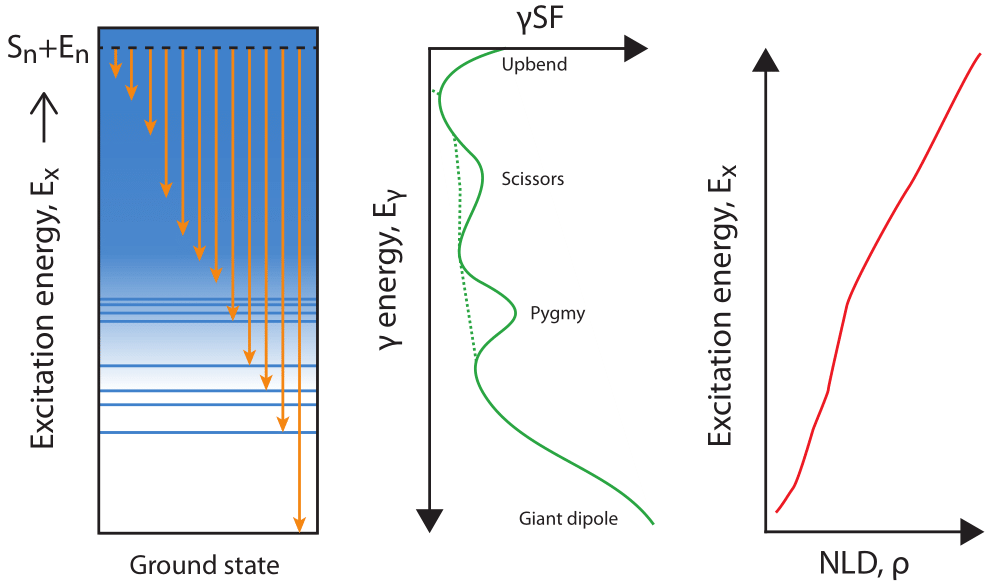
We use statistical Hauser-Feshbach theory updated to account for fission transmission
Model inputs: nuclear level density, $\gamma$-ray strength functions, optical model potentials and fission barriers
Neutron-induced fission rates

Use statistical Hauser-Feshbach for competition between neutrons, $\gamma$s and fission
Barrier heights Möller (2015) / FRDM2012 masses
Large region that will fission cycle $r$-process
Neutron-induced fission rates

Use statistical Hauser-Feshbach for competition between neutrons, $\gamma$s and fission
Barrier heights from HFB-14 / HFB-17 masses
Similar results are obtained for other nuclear models
$\beta$-decay & $\beta$-delayed fission
Combining QRPA + HF
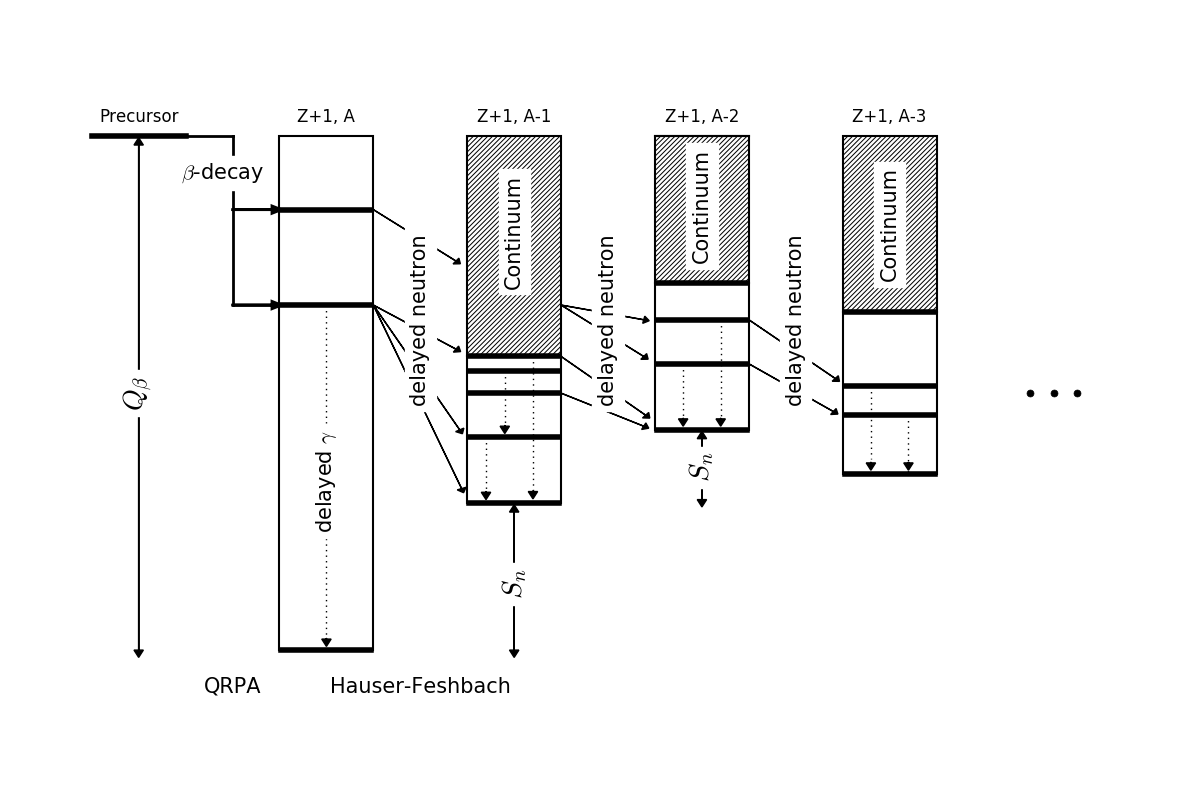
Initial population from the $\beta$-decay strength function from P. Möller's QRPA
Follow the statistical decay until all excitation energy is exhausted
Average neutron emission
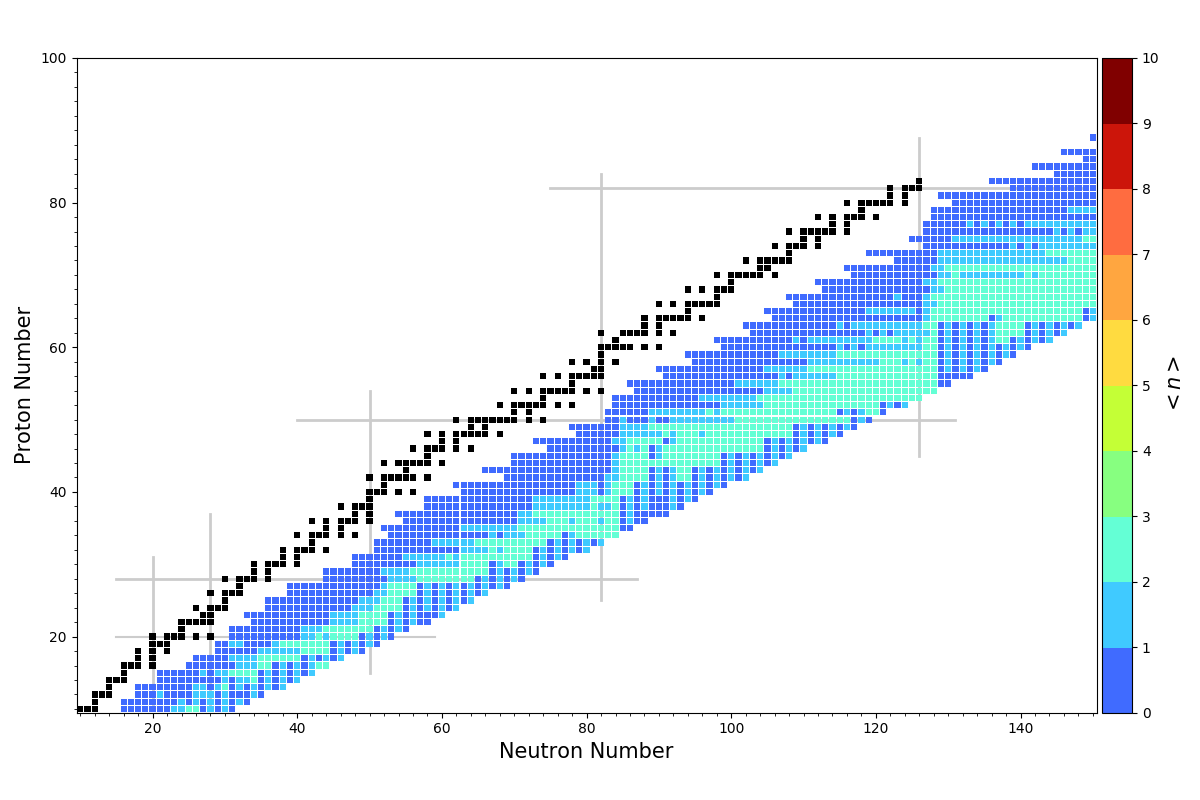
Apply energy window method to the entire chart of nuclides
Problem with describing very neutron-rich nuclei
Average neutron emission
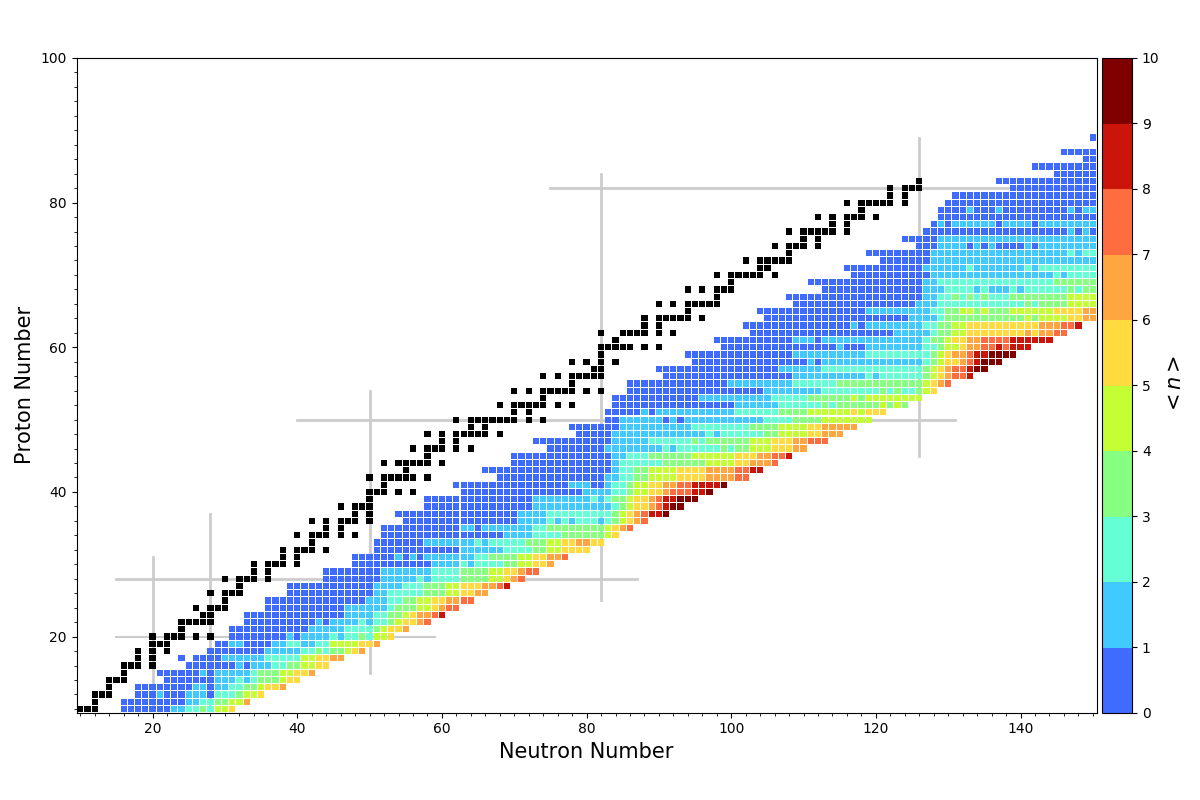
Apply the QRPA+HF method to the entire chart of nuclides
Problem with neutron-rich nuclei goes away
$\beta$ -delayed fission
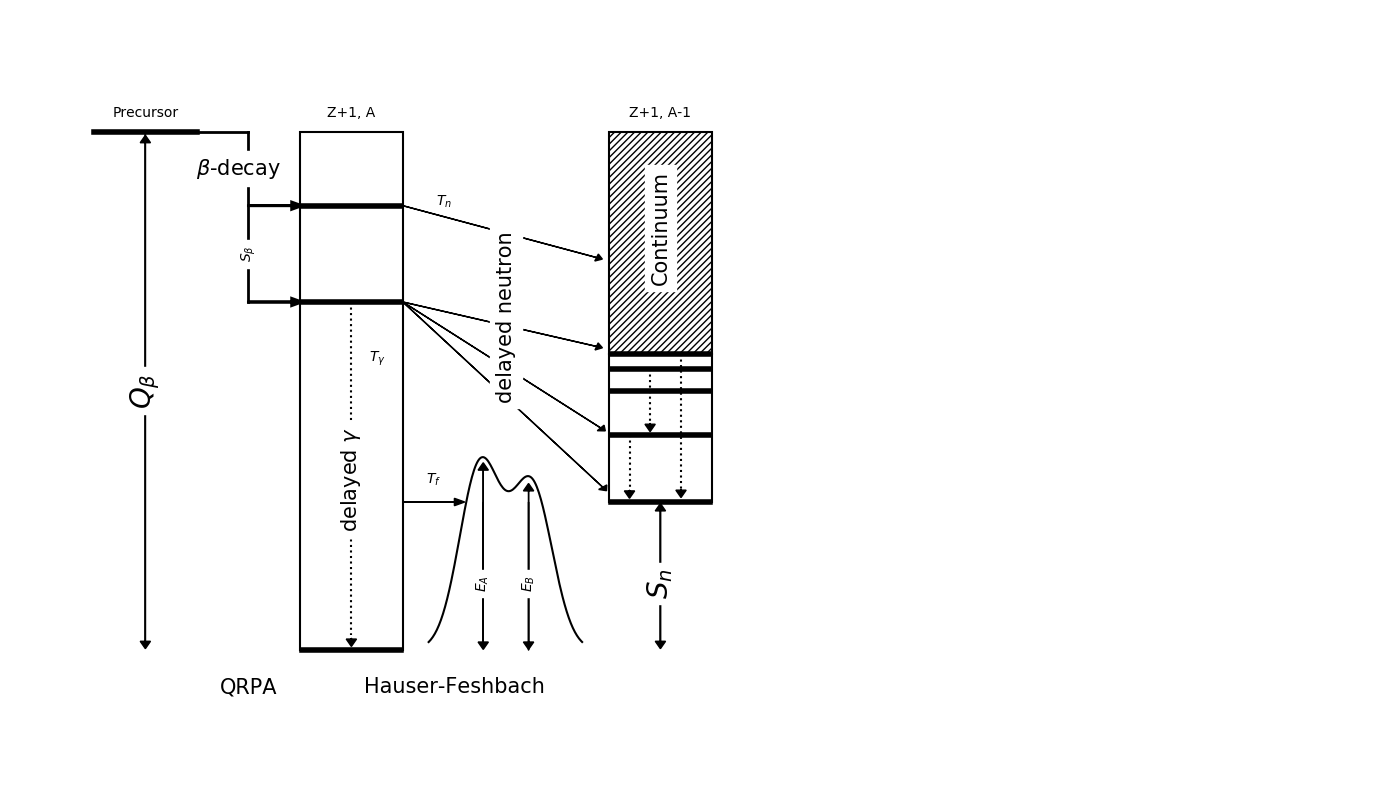
We have recently extended our QRPA+HF model to describe $\beta$-delayed fission ($\beta$df)
Barrier heights from Möller et al. PRC 91 024310 (2015)
Assumes a Hill-Wheeler form for fission transmission
Yokoyama et al. PRC (2019) • Mumpower et al. ApJ (2018)
Multi-chance $\beta$ df
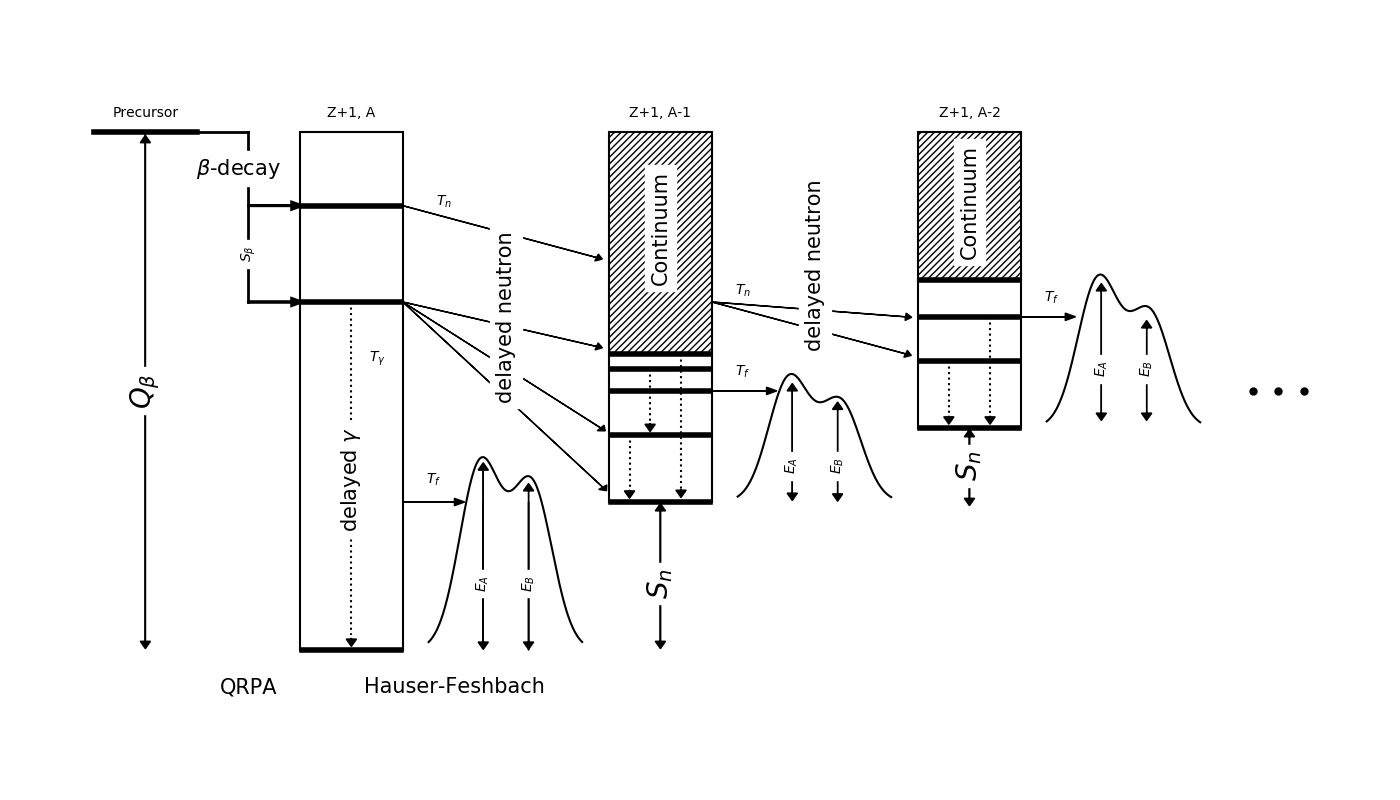
Recall: Near the dripline $Q_{beta}$ ⇡ $S_{n}$ ⇣
Multi-chance $\beta$df: each daughter may fission
The yields in this decay mode are a convolution of many fission yields!
Yokoyama et al. PRC (2019) • Mumpower et al. ApJ (2018)
Cumulative $\beta$ df probability
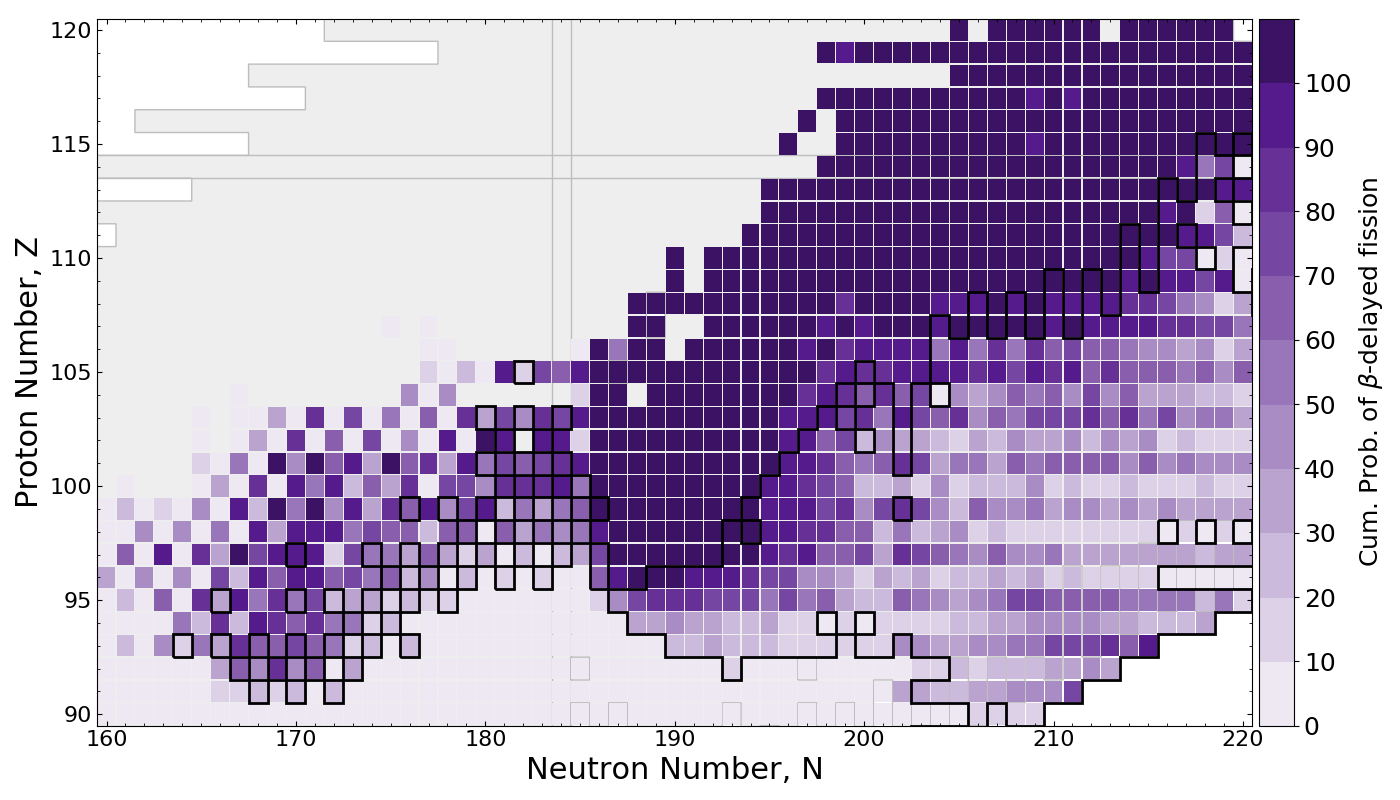
$\beta$df occupies a large amount of real estate in the NZ-plane
Multi-chance $\beta$df outlined in black
Multi-chance $\beta$ df contribution
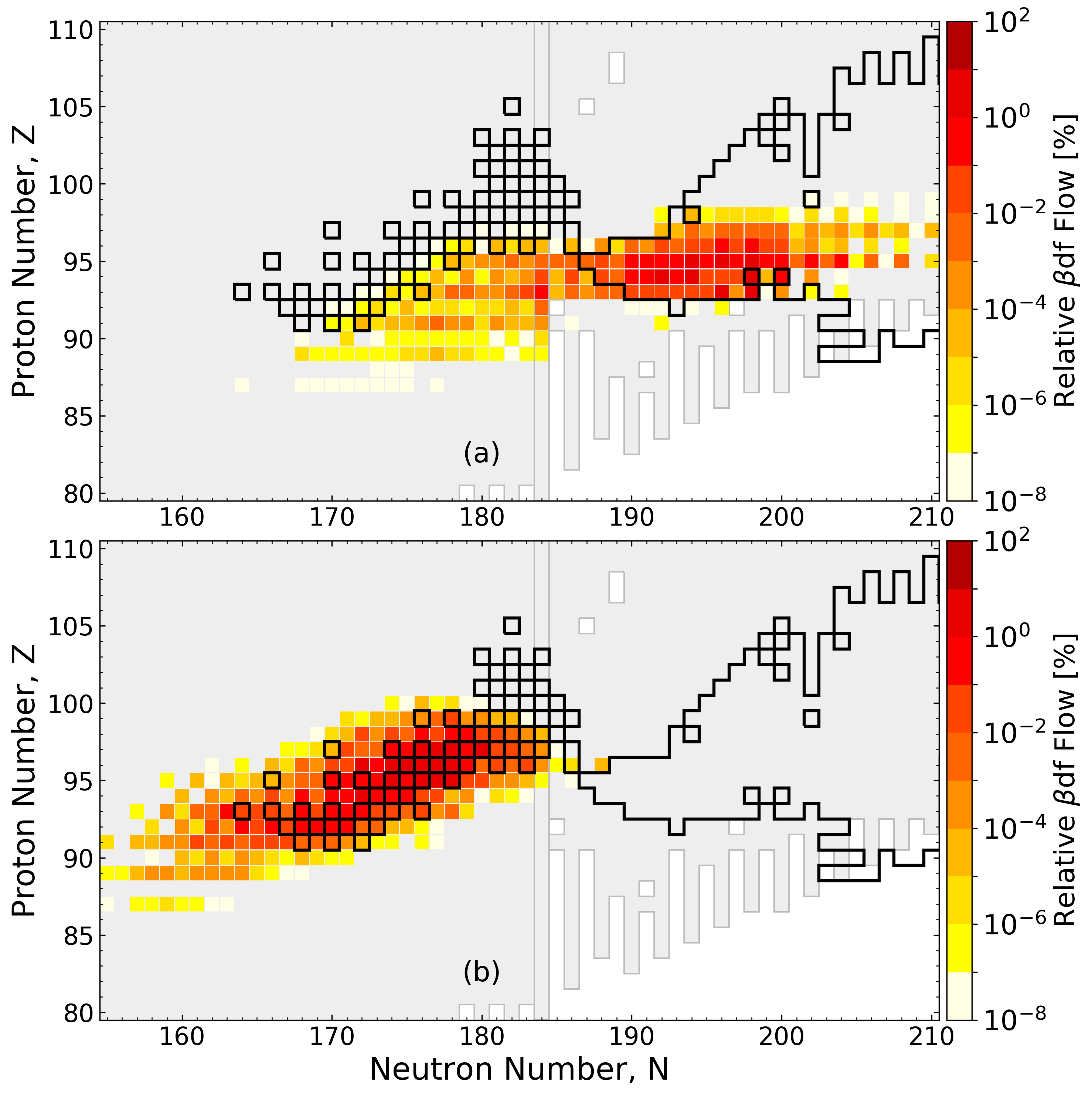
Network calculation of neutron star merger ejecta; FRDM2012 inputs
Multi-chance $\beta$df contributes at both early and late times
Application to the $r$-process
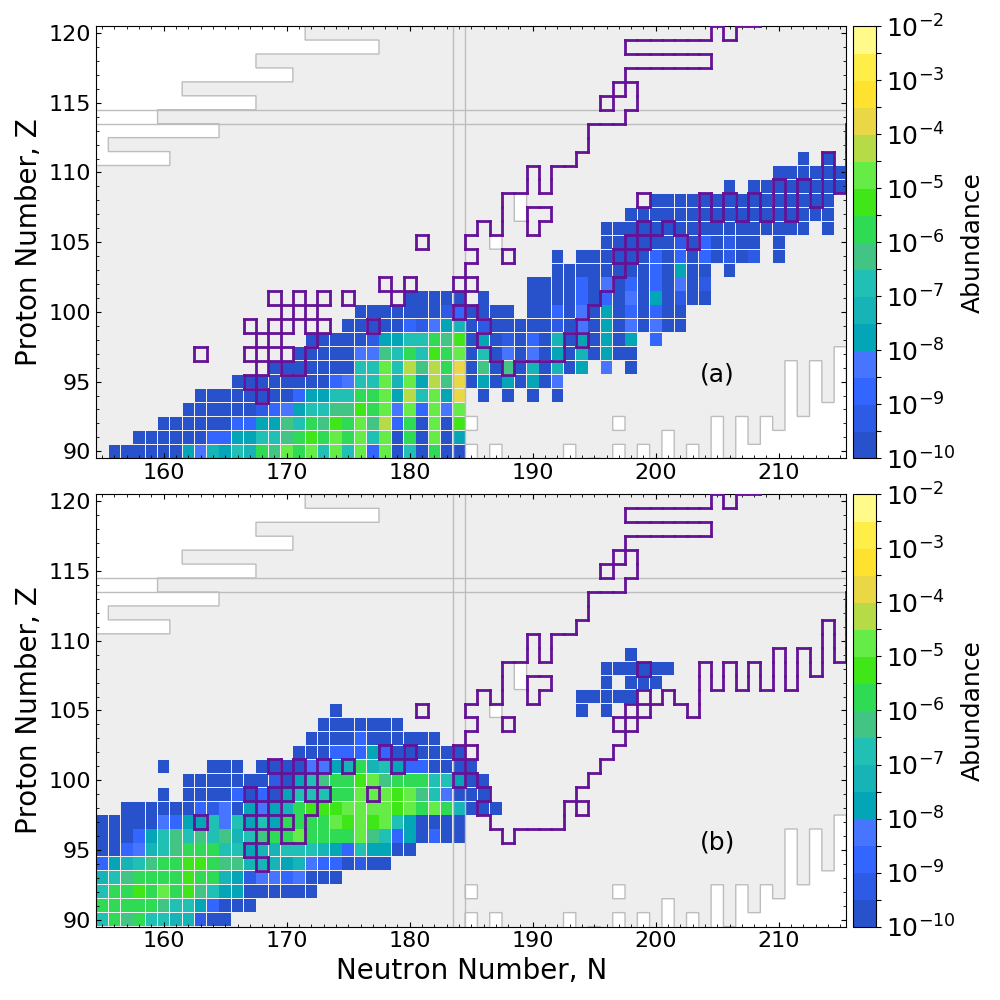
PRISM network calculation of neutron star merger ejecta
$\beta$df alone may prevent the production of superheavy elements in nature
Impact on final abundances
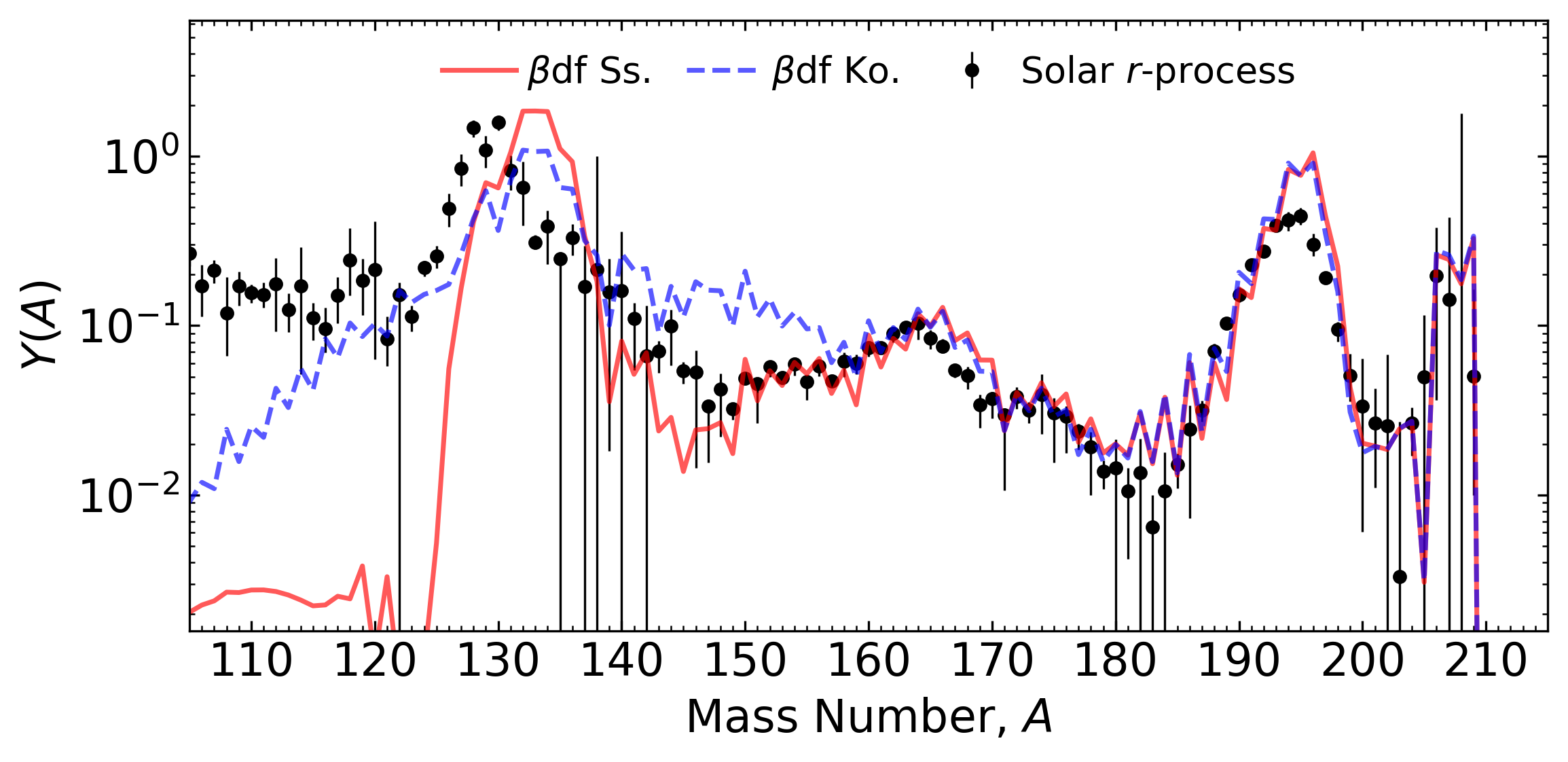
Network calculation of tidal ejecta from a neutron star merger (FRDM2012)
$\beta$df can shape the final pattern near the $A=130$ peak
This is because of a relatively long fission timescale
Conclusion ⇒ we need a good description of fission yields to understand abundances near $A\sim130$.